 In a post on John Saladino last week I talked about mon or kamon, the heraldic crests of Japan. As they are so prevalent in Japanese design, I thought it would be interesting to showcase some of the variety found. In general, they are stylized symmetrical patterns or small pictures placed inside a roundel. They have a long history in Japan, used first by the aristocratic classes and later by the public at large. You can read more about them here.
In a post on John Saladino last week I talked about mon or kamon, the heraldic crests of Japan. As they are so prevalent in Japanese design, I thought it would be interesting to showcase some of the variety found. In general, they are stylized symmetrical patterns or small pictures placed inside a roundel. They have a long history in Japan, used first by the aristocratic classes and later by the public at large. You can read more about them here.
The 16 petal chrysanthemum is the kamon of the Emperor of Japan and its use by others was prohibited by law. Chrysanthemums with fewer petals could be used though.
 You still see many examples of this Imperial crest. Here it is atop a torii gate.
You still see many examples of this Imperial crest. Here it is atop a torii gate.
 One of the original uses of kamon related to war. They were placed on standards to identify troops in a battle. Here is a modern-day version – a Japanese battleship adorned with an imperial kamon.
One of the original uses of kamon related to war. They were placed on standards to identify troops in a battle. Here is a modern-day version – a Japanese battleship adorned with an imperial kamon.
You can find kamon everywhere in Japanese antiques and decorative arts.
 The antique indigo cloth above has a traditional wisteria design with a kanji in the center. It is set against a background of sashiko embroidered traditional patterns.
The antique indigo cloth above has a traditional wisteria design with a kanji in the center. It is set against a background of sashiko embroidered traditional patterns.
 You can see a few historic kamon on this resist-dyed textile including the kamon of Tokugawa, the shogun who unified Japan. It has three wild ginger leaves set in the circle.
You can see a few historic kamon on this resist-dyed textile including the kamon of Tokugawa, the shogun who unified Japan. It has three wild ginger leaves set in the circle.
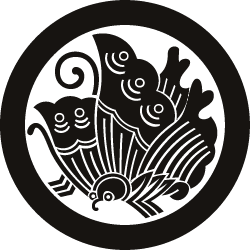 Another common kamon is the butterfly – it is a good non-symmetrical figural example.
Another common kamon is the butterfly – it is a good non-symmetrical figural example.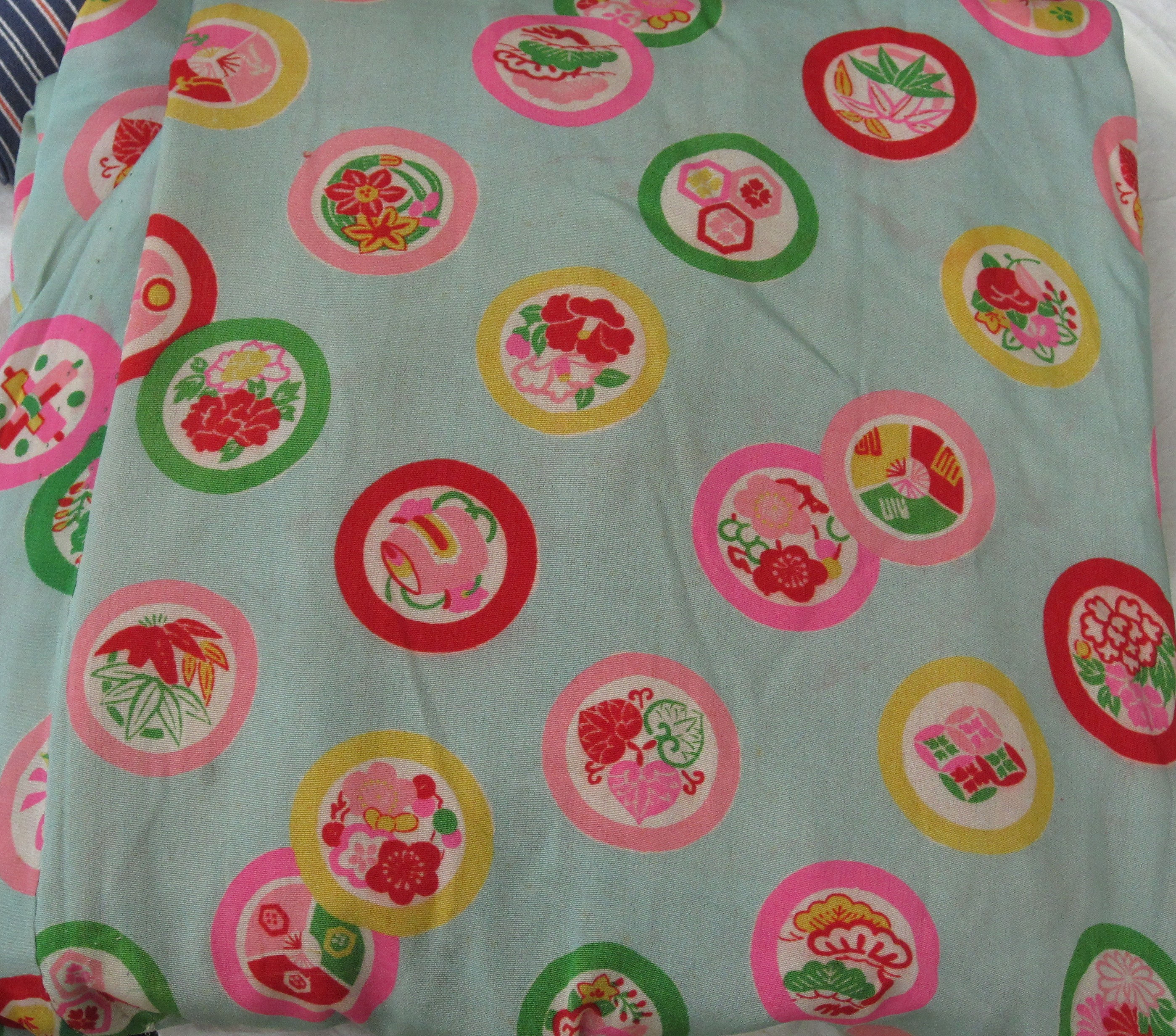
In this brightly colored vintage kimono you can see many of the same kamon as on the indigo cloth above, including the Tokugawa (wild ginger leaves) kamon and the pine.
This small silver toothpick holder has two kamon – an ume (plum) blossom and a tachibana (wild orange).
While some items are decorated with actual kamon, others are often covered with simple patterns and scenes within the roundels, which are simply called mon. Notice here how the mon are actually etched realistic looking flowers in the rounds and not stylized representations like the kamon above. The design and form make me think that perhaps this Meiji period silver jewelry box was made for export. I was very tempted to buy it (inside it has three gorgeous dark lacquer drawers) but it was out of the price range for a casual impulse buy.
Particularly in porcelain, you see many simplified and stylized (and plain old “made-up”) patterns.
Here again we see fanciful designs in the circles, scattered all over this Imari pot. This kind of patterning is a favorite of mine – I think you can see why I called it “the polka dots of Japan”. I have a memory of two massive urns with a similar mon pattern placed near the entry to the Ralph Lauren store in the Rhinelander Mansion. I wonder if they are still there?
Mon and kamon are seen not only in decorative arts, but in product branding and logos. Two of my favorites below:
The retired logo of Japan Airlines is a crane kamon. What a graceful and beautiful logo and a shame that they changed it to this.
And now for the cutest part of the post! Shu Uemura launched their wonderful cleansing oil in an adorable modern Harajuku version of kamon. Sadly, they are no longer available but I bet that the bottles and containers are probably wildly collectible on eBay. Take a moment and compare these girls to the mon pattern on the silver jewelry box….
Image Credits:1-3 tamamushi; 4,6,9-13 me; 5,7 & 8 Japanese Free Clip Art; 14. Japan Probe; 15. Shu Uemura


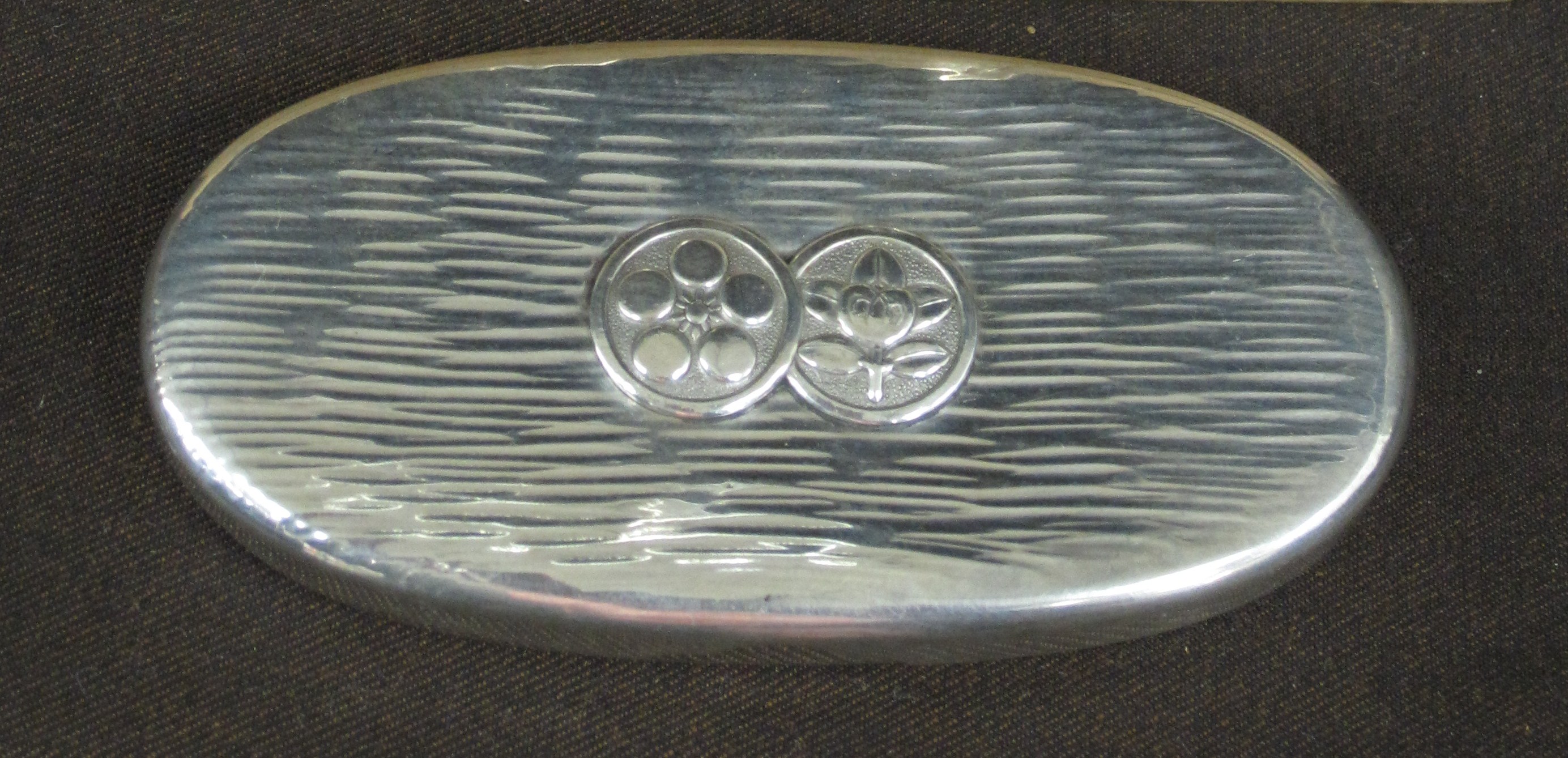

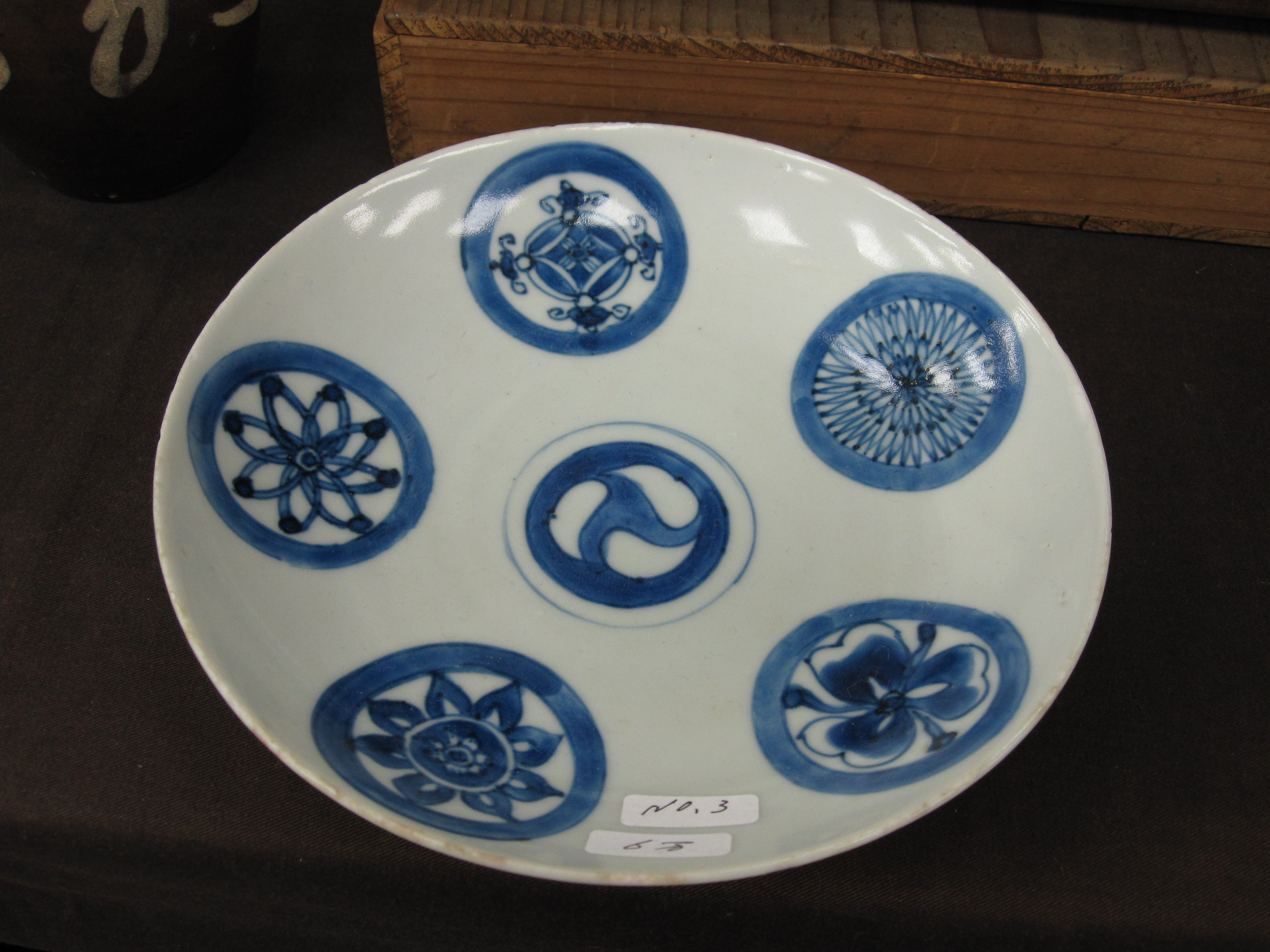
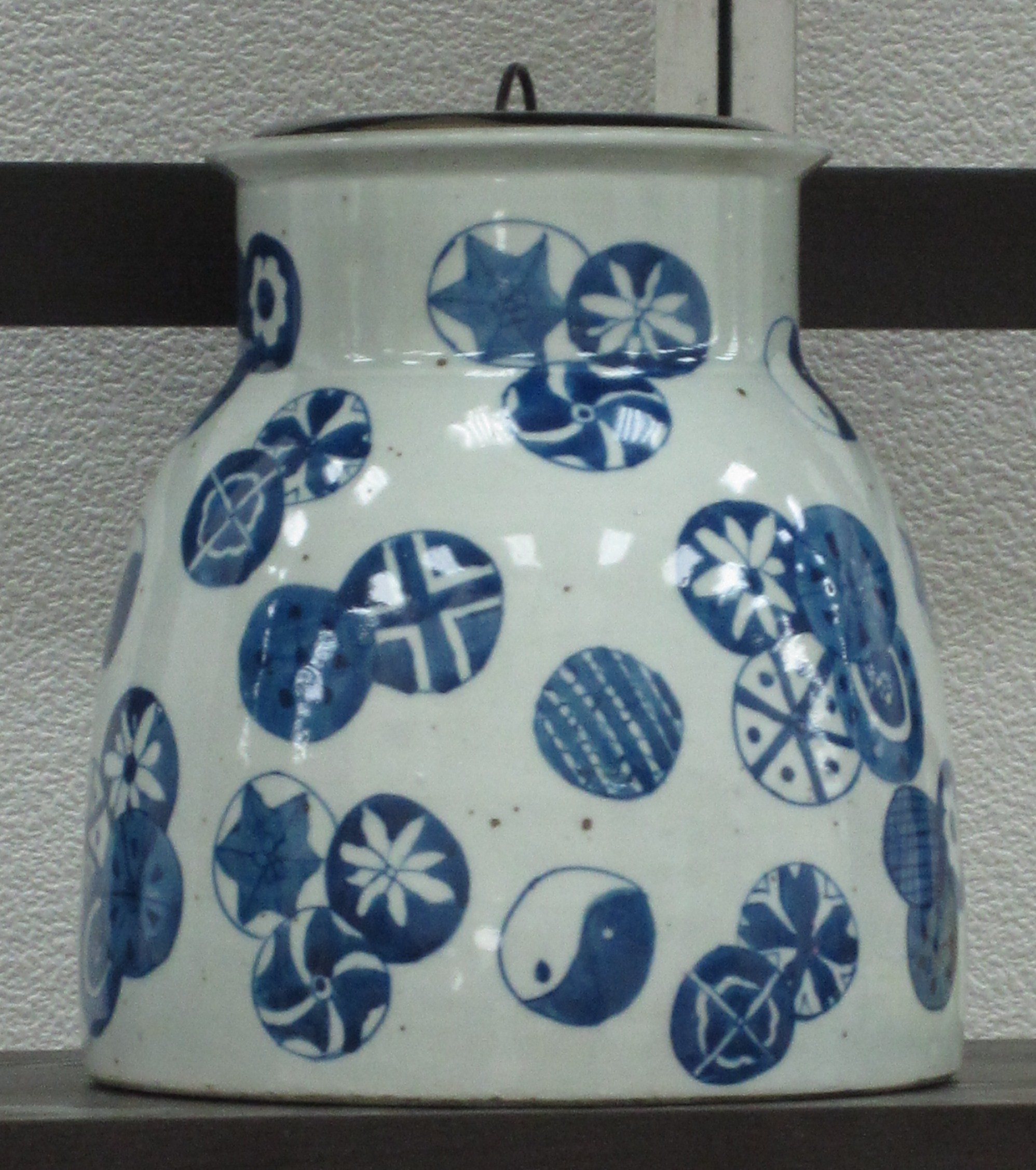


fantastic post – what fun reading!
Thanks! And I know you love polka dots!
A Riot of Color…Temo Callahan and Studio Printworks « Tokyo Jinja
[…] as a follow up to Tuesday’s post, Studio Printworks has a fantastic wallpaper called “Kiku Kamon” in eight different […]
Temo Callahan’s apartment has so many objects that remind me of decorating styles and collectibles from the 60’s and 70s – my mom brought back the same African drum from her safari in Kenya in 1972! And some of the art (the black and white piece in particular – is that Franz Kline?) seem to be from the Abstract Expressionist school, which I imagine was pretty collectible in the 60s and 70s, but that is just a guess…and I notice he mixes rich materials/textures/colors with the stark lamp…I am a Mad Men addict – I wonder if Bertram Cooper’s apartment looked a little like this one! He also seemed to appreciate Japanese arts.
Anyway, love your blog – very inspiring and thought provoking!
Love it!! thanks for the print show preview!
Hey Elizabeth-
I have such a vision now of the apartment you grew up in. Don’t you love that gallery walls are back in!
Thanks for your comments!
Carnation Fixation…Ottoman Inspired Textiles | Tokyo Jinja
[…] the forefront of my vision. It’s not that I am abandoning my love of sho-chiku-bai, ami, kamon or the rest of the lexicon of Japanese pattern, just that I am deeply interested in adding to it. […]